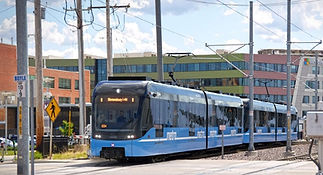
We’ve all read plenty of stories where criticisms of Amtrak’s shortcomings or the politics surrounding passenger rail service are part of the narrative. We are seeing such stories now as Ohio decides whether to advance an historic expansion of passenger rail under the Amtrak Connects US plan for the nation and Ohio.
But this most recent story by Cleveland Magazine editor Annie Nickoloff is different. For certain, her decision to spend 24 hours on Amtrak’s “Lake Shore Limited” from Boston to Chicago could have easily been the clichéd story about a “beleaguered Amtrak, unable to provide reliable, on-time service...dirty on-board bathrooms....less than premium dining in an actual dining car,” etc. And some of those elements are present in this story.
What Annie Nickoloff does differently is to put her first-person story in the perspective of how good train travel could be if we commit to investing significantly in better, more reliable equipment and service. For its part, the Biden Administration has done this in huge fashion through the Bipartisan Jobs and Infrastructure Act. Within it is an historic $66.3-billion-dollar investment in growing and improving the nation’s passenger rail system. In its over-50-year history, Amtrak has never had a budget this large.
Nickoloff’s story recognizes this and also nails the other half of this major infrastructure investment: whether and how Ohio steps up to support it. She accurately reports how the mayors of every city along the Cleveland-Columbus-Dayton-Cincinnati Corridor and a half-dozen of Ohio’s important Metro Planning Organizations all filed official “Expressions of Interest” last Fall with the Federal Railroad Administration. Those “expressions” actually nominated almost a dozen potential passenger rail corridors in Ohio, including several not yet on Amtrak’s “visionary” map for Ohio. Bottom line: it makes each of these corridors eligible for future FRA planning and service development grants.
By weaving this into the Cleveland Magazine story, it becomes a story recognizing more than Amtrak’s shortcomings, but how the following can make passenger service in and through Ohio can be better:
Multiple train frequencies and daylight service options every day for every station stop in Ohio.
Progressively faster train speeds up to 110-MPH, which means running times more than competitive with driving.
Better passenger rail equipment and on-board services like wi-fi, improved beverage and food service.
Plus, the impacts on station-oriented economic development, jobs and workforce development.
There’s more for sure. But my point is that Annie’s first-person account of her trip caught more highlights than lowlights and it served to help make our case that the State of Ohio and Governor DeWine need to and MUST join with the Mayors and MPO’s in pursuing both planning and service development grants to finally make Ohio a connected state: both within itself and to the Midwest and the nation.
ABOUT ALL ABOARD OHIO
All Aboard Ohio is a non-profit, member-based organization dedicated to promoting improved public transportation and passenger rail service throughout the state.
Founded in 1973 and incorporated as a registered 501c-3 in 1987, All Aboard Ohio has spent more than 50 years advocating, educating, and working towards our goal of a connected Midwest
All Aboard Ohio is a 501c-3 nonprofit with over 50 years of advocacy work, advocating for improved public transportation and passenger rail service in the Midwest
©2025 by All Aboard Ohio
Get in Touch
3136 Kingsdale Center,
#112 Columbus, OH 43221
Federal Tax ID: 31-1066182









